Cadillac Queen said:Okay I been a decade out of the loop, but on my return I find one customer replaced all my cad 500 with the out of crate 496 CID used on their boats. Of course they have been yanking off the fuel injection. But I go to look for the common replacement aftermarket parts, dress up parts, etc and am at a bit of a loss, since I have no clue what Chevy family cid engine is the match for the 496. I am having more trouble finding basic aftermarket parts for this engine than I do for those oldie cads. Anyone have this engine and been altering it yet?
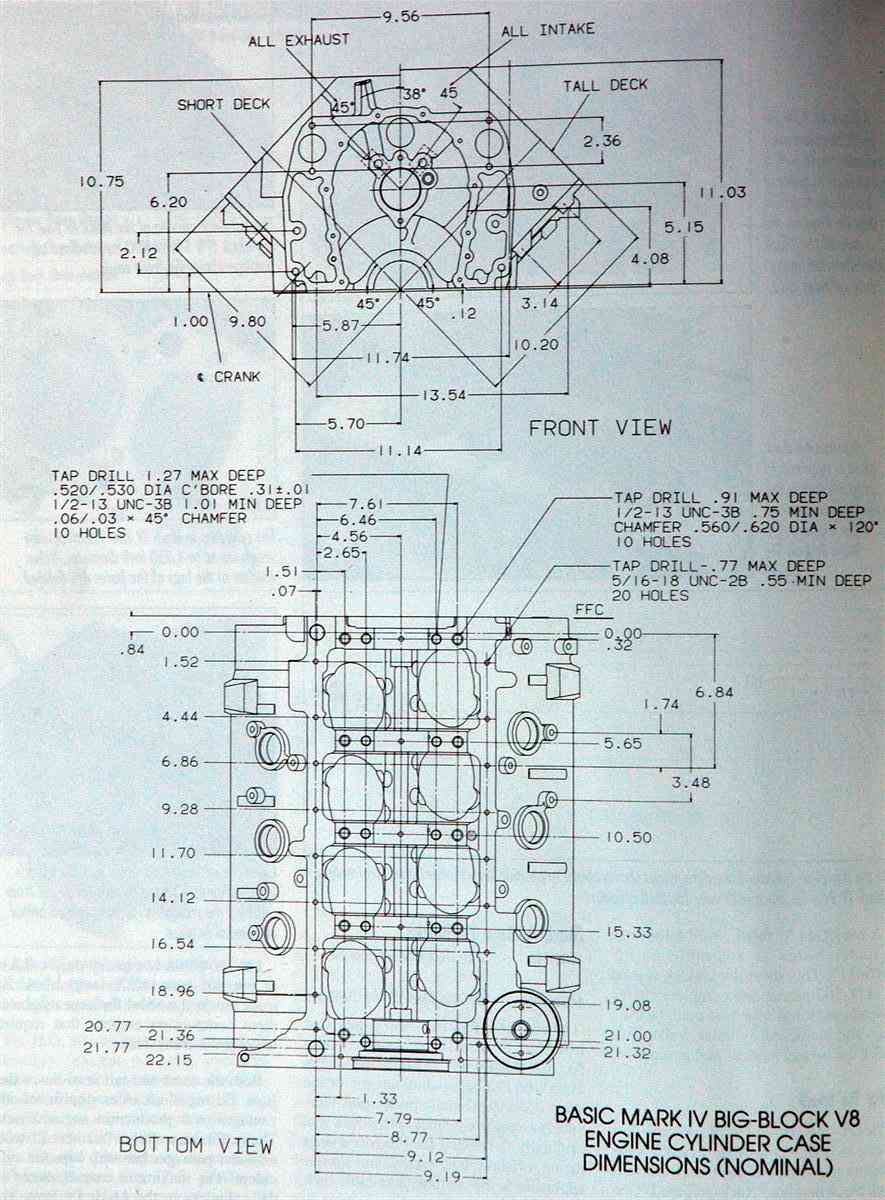
there are two different versions or families of the 496 BIG BLOCK CHEVY engines
youll want to post a couple pictures and casting numbers to verify what 496 BIG BLOCK CHEVY ENGINE your referring too.
the more common version is built from EITHER a standard 427 or 454 Chevy block , which originally had a 3.76" stroke (427) or a 4" stroke (454) with an aftermarket 4.25" stroker rotating assembly, (vs the stock 4" stroke crank and 6.135" connecting rods) . the longer stroke crank, and longer 6.385" connecting rods (to clear the larger crank counter weights) and a .060 over size 4.31" diameter piston's
keep in mind the 9.8" standard passenger block deck height or the taller truck block with a 10.2"deck height can be used , both blocks have advantages and disadvantages (personally I prefer the taller truck blocks or better yet the aftermarket tall deck DART BLOCK)
Dart Big Block Chevy Big M Engine Block
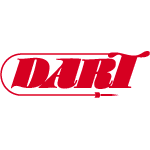
Features:
- Siamesed Extra-Thick Cylinder Walls: Resists cracking and improves ring seal (minimum .300'' thick with 4.625'' bore).
- Scalloped Outer Water Jacket Walls: Improves coolant flow around the cylinder barrels to equalize temperatures.
- Four-Bolt Main Bearing Caps: In steel or ductile iron have splayed outer bolts for extra strength.
- Crankshaft Tunnel: Has clearance for a 4.500'' stroke crank with steel rods without grinding.
- True ''Priority Main'' Oil System: Lubricates the main bearings before the lifters.
- Oil Filter Pad: Drilled and tapped for an external oil pump.
- Rear Four-Bolt Cap: Uses standard oil pump and two-piece seal - no adapter required!
- Lifter Valley Head Stud Bosses: Prevent blown head gaskets between head bolts.
- External Block Machining: Reduces weight without sacrificing strength.
- Simplified Install : Fuel pump boss, clutch linkage mounts and side & front motor mounts simplfy installation on any chassis.
- Dual Oil Pan Bolt Patterns: Fits standard and notched oil pans.
- Bellhousing Flange and Rear Main Bearing: Reinforced with ribs to resist cracks.
- Note: Does not include cam bearings, freeze plugs, or dowels
But there is still a strong following among light-truck and SUV enthusiasts, even though the 8100 has been out of production (for highway use) since 2010. And, yes, more than a few Camaros, Chevelles, Corvettes, and Novas have been treated to 8100 power at the hands of builders seeking something out of the ordinary. These guys inevitably turn to lightweight aluminum heads from the aftermarket to shed weight. The resulting 500-plus-incher may not rev to 7,000 rpm like an LS, but with another 150 lb-ft of torque off the line, who needs revs? Check around, 8100 swaps have become popular with a host of car builders looking for something different.
Back to the history lesson, the 8100 was part of a final wave of domestic, gas-burning truck engines that included the 1994 8.0L Dodge V10 and 1997 6.8L Ford V10. Volatile gasoline prices conspired with advances in diesel engine technology like direct injection and refined turbo systems to make these oil-burners more appealing than ever. This slashed demand for these comparatively thirsty gasoline powerplants, and only the Ford V10 remains in production today. Dodge pulled the V10's plug after 2003 (except for Vipers), while the last Vortec 8100 was assembled in December 2009.
The nautical version marketed by Crusader was branded Captains Choice, a great name if ever there was one.
While Dodge and Ford added cylinders to get the necessary displacement, for the Vortec 8100, GM simply took the venerable 454 big-block V8 crankcase and gave it a shot in the arm. Though not officially designated as such by the factory, enthusiasts refer to the 8100 as a Gen 7 big-block because it borrows from the Gen 6 454/502 heavily. Call it what you will, the 8100 was the result of GM bumping the Vortec 7400/454's 4.00-inch stroke to 4.37, thanks to longer connecting rods and a block with taller decks. Sharing the 454's 4.25-inch bore, a burly 496 ci resulted. Being a heavy-duty, truck-specific engine, four-bolt main bearing caps are used, but unlike traditional high-performance 396 through 502 blocks—where the end caps (numbers 1 and 5) got the usual two bolt caps—the 8100 takes it all the way with four-bolt caps at every location (like many diesels).
If all of this makes builders of traditional rat motors drool with visions of inexpensive 600-cube torque monsters based on recycled 8100 blocks, beware. Changes were made to the block's oil-pan rails, all fasteners are Metric, and the 18-point head-bolt pattern (two more than the 396–502) is radically different and doesn't begin to accept factory or aftermarket big-block heads. Thus, the 8100 block isn't of much use to traditional Chevy big-block builders, but as we'll see, all is not lost.
And about those heads; though an assembled 8100 may not look much different from the 454-based Vortec 7400 it replaced, the intake ports were radically reworked. Since its debut in 1965, the Chevy big-block's canted valves delivered excellent breathing characteristics, thanks to the moving valve head's trajectory away from the shroud-inducing cylinder wall. But due to the need to allow space for things like pushrods, water jackets, fastener bosses, and intake ports, non-symmetrical, siamesed intake ports resulted. In short, the engine inhales through two distinctly different-sized intake runners: two short and two long. The symmetrical exhaust ports are less compromised, but there was room for improvement in both areas.

Improvement came from the LS1. One look at the tall, thin cathedral intake ports first used on the 1997 LS1 cylinder head will show that their designers were fixated on symmetry. By focusing on shaping the ports as close as possible to each other in terms of size, contour, volume, and flow capacity, the density and velocity of the intake charge entering each cylinder is closer to equal. The resulting cylinder pressure during combustion is then equalized—as are the spent gas-evacuation characteristics during the exhaust stroke—and a more efficient engine results. That the LS1 (and subsequent Gen III small-blocks) are potent is an understatement.
For the 8100, GM designers cast aside the big-block's traditional long-port, short-port intake design and applied the LS1's strategy of making each intake and exhaust port as close to the rest as possible. With the intake manifold removed, the 8100's evenly spaced intake-port openings are a foreign sight compared to the traditional siamesed ports of previous big-block heads. What worked on the LS1 also worked on the 8100, though as a truck-oriented workhorse, GM concentrated on low- and midrange torque production, so don't expect to see fist-sized orifices.
More than a few Camaros, Chevelles, Corvettes, and Novas have been treated to 8100 power at the hands of builders seeking something out of the ordinary.
The big-block's traditional canted valve layout was retained because it still works. So yanking an 8100 valve cover reveals the big-block's non-linear, "porcupine," valve-stem configuration and stud-mounted rocker arms. Overall, GM did a fine job of giving the "Rat" a new lease on life. But at 340 net horsepower in stock trim, there's plenty of unexplored potential on tap.
We recently got a call from Patrick Davis, owner of a 2006 Chevy Avalanche, who turned us on to the world of 8100 performance modifications, thanks to an engine rebuild performed by James Bostick and the guys at Bostick Racing Engines in El Cajon, California. It turns out there are lots of frustrated 8100 owners—on land and sea—who need more than 340 hp and 450 lb-ft of torque, but don't want to turn to diesels. They all go to Raylar Engineering for help. Raylar is the go-to shop with a full line of available rotating assemblies, camshafts, valvetrain and intake-manifold upgrades and even a line of Big Power aluminum cylinder heads. Raylar's website even shows how to swap an 8100 into a C3 Corvette! Let's dig in and see how Pat's Avalanche has improved.

The 496ci Vortec 8100 appeared in 2001 as a replacement for the 454ci Vortec 7400. The 8100's 42 extra cubes, siamesed intake ports, and other improvements delivered 340 hp and 450 lb-ft of torque in stock trim. The outgoing 454 rated 290 hp and 410 lb-ft. This 2006 Chevy Avalanche's owner needed even more and put Bostick Racing Engines on the job.

The 8100 block bears external 8.1L markings for quick identification. With four-bolt main caps in all five positions, bottom-end strength is abundant and all-out builds can easily handle 7,000 rpm. Lacking a distributor-mounting hole, the factory crank trigger ignition is retained to fire the plugs. The 8100's main cap bolts torque to 110/100 lb-ft (inner/outer) at all locations. Believe it or not, the 8100 block is 20 pounds lighter than a 502 due to its thin wall casting.

The dominant source for upgraded 8100 parts for land and sea use, Raylar Engineering offers everything needed to transform the 8100 into a stormer. The Raylar 4.75-inch stroker kit bumps displacement to 547 cubes using all forged rotating parts. Stock 8100 cranks and pistons are cast with powdered metal rods. Raylar's kit uses all forged parts and hard-anodized piston skirts with anti-friction coatings. The rotator can handle 800 hp and even turbocharging. Note the crank position tone ring at the tail of the crank (left).

The Avalanche block's seasoned bores are enlarged 0.030-inch to 4.280 to eliminate existing wear. The bottoms of the cylinder barrels require modest notching to clear increased swing arc of rods. Swapping 8100s into classic Chevys with manual transmissions requires a hydraulic clutch actuator. The 8100 block lacks the threaded receptacle for clutch pivot ball.

The Raylar 540 stroker assembly grows to 547 with the 0.030-inch cylinder overbore. Swappers love the 8100 block for its combination of LS style and traditional motor-mount bosses. The dual circular holes tapped into the oil-pan rail ahead of the oil-filter pad connect to factory-stock external oil-cooler circuitry. The wider oil-pan rail doesn't accept non-8100 oil pans. Truck pans swapped into cars are aluminum and require modifications to fit.

Stock 8100 cast-iron heads weigh 78 pounds each and are not interchangeable due to a front-mounted coolant transfer tube. Raylar's Bigpower CNC aluminum heads weigh less than half that and interchange from side to side. Port flow at 0.300-inch lift is 240/176 cfm (I/E), 0.400 lift yields 295/201 cfm, 0.500 lift yields 330/229 cfm, and at 0.600 lift you'll see 341/252 cfm. More than 400-cfm flow numbers are possible with the CNC Extreme head option.
The resulting 500-plus-incher may not rev to 7,000 rpm like an LS, but with another 150 lb-ft of torque off the line, who needs revs?

At 315 cc, Raylar intake ports are significantly larger than stock 8100 heads (see sidebar). Raylar also embraced the LS-style, high-velocity, symmetrical intake-port configuration to feed its 2.19-diameter EV8 stainless intake valves. Manganese-silicon bronze valve guides and hardened steel valve seats are ready for anything from trailer hauling to turbocharged dragstrip duty.

Like the stock 8100, Raylar retains the good D-shaped exhaust port but with a larger 135cc volume. Exhaust valves measure 1.750-diameter and share necked 11/32 valve stems with intake side. Both seats feature a five-angle competition valve job. Optional CNC Extreme heads use 2.25/1.88 valves and extensive CNC porting to boost flow.

Like GM, Raylar's aluminum heads retain the benefit of the big-block's stock canted valve arrangement, as well as the stock guideplates and rocker studs. Fully CNC-machined 107cc combustion chambers bring compression ratio to 10:1 (9:1 is stock). Extra-thick 5/8-inch cylinder head decks ensure rigidity; the factory iron head decks are ½ inch.

Up top, the Raylar Big Power castings come with double valvesprings and chromoly retainers providing 140 pounds on the seat at 1.900-inch installed height and 380 pounds at 0.600-inch lift. Stock 8100 valve covers must be used since the bolt pattern is different than traditional big-blocks—more on that in a moment. Beware, the stock 8100 is an all-Metric engine and its stock fasteners are all one-time-use, torque-to-yield items.

The 8100's LS-style port spacing and 1-8-7-2-6-5-4-3 firing order prevent the use of traditional big-block camshafts. Raylar honcho Larry Hofer says he's invested too much dyno time to give away the ideal cam specs. Thus, Raylar offers nine proprietary performance-proven hydraulic roller cams to suit applications from trailer towing to turbocharged drag racing. This trio depicts (left to right) the 203 (high-torque, stock-idle quality, emissions-compliant, safe with stock piston crowns), the 206 (for stock displacement or strokers with deep-relief pistons, choppy idle, 2,500-rpm stall recommended, improved midrange and top-end power), and the 213 (high lift, choppy idle, ideal for extra-displacement applications, requires Raylar deep-relief pistons). We pried, but all Hofer would say was that valve lift ranges between 0.500 and 0.660 lift. Call Raylar to make sure your pistons and cam are safely matched. Our 547 Avalanche runs the 206 cam. One benefit is the stock GM roller lifters can be reused if they're healthy.

Seasoned big-block builders will note the shortness of the Raylar chrome-moly rocker arm stud assemblies. The total installed height is low enough to fit beneath the stock 8100's pancake valve covers. The Raylar 1.7:1 cast stainless roller rockers gain 18 hp versus stock 8100 scrubber-type rockers. The top timing gear does double duty as cam position sensor trigger. Three gear and sensor assemblies were used (2001, 2002–2003, and 2004-up), so contact Raylar to ensure you've got the right parts. The head bolts torque to 55 lb-ft (long), 50 lb-ft (short), and with six fasteners clamping the gasket's fire ring around each bore, the 8100's gasket seal is unsurpassed in stock rat motor block history.

The stock cast-aluminum 8100 intake manifold and 73mm throttle-body were meant for hauling and suppress airflow and power above 4,000 rpm. To complement our 547-cube long-block, Raylar offers this modified manifold with removed internal dividers, port matching, and a 90mm throttle-body for increased flow and power with the rpm ceiling climbing to 5,000. The stock 27-pound fuel injectors were at maximum duty cycle and gave way to Delco 42-pound squirters. All-out applications can make use of Raylar's fabricated aluminum Cool-Gap intake manifold or even a vertical eight-stack manifold with individual runners and ram tubes. When uncorked with these manifolds, crank speeds approaching 7,000 rpm are possible in all-out builds.

Perched on the engine stand, the completed 547-cube Vortec mill wears equal-length headers from JBA Headers. Designed for 2001–2006 8100-powered trucks, they're superior to stock manifolds and feature 2-inch primary tubes, 3-inch collectors, and are CARB approved. They cooperate with factory head pipes and catalytic converters for easy installation. Note the 8100's coil-near-plug ignition layout. The white ceramic spark-plug boots can withstand 2,000 degrees and are available from Raylar to prevent burned wires.

Once installed in Davis' Avalanche, Bruce Tucker and the crew at JBA Speed Shop reprogrammed the ECU, then strapped the beast to their Mustang chassis dyno. If you're wondering how a 4x4 truck gets tested on a rear-wheel-only chassis dyno, thank the Avalanche's 4x4 on/off switch! The stock 8100 uses the same ECU as many LS engines (PN 12200411 and popularly referred to as the 0411), so reprogramming is no mystery. JBA updated the fuel trim, spark table, torque management, and the self-learning properties took it from there. Not used in Corvettes or Camaros, the truck-only, torque-management function retards timing to protect the transfer case against damage in extreme off-road situations. Passenger cars (fortunately) lack this detail.

The notoriously conservative Mustang chassis dyno delivered the news. Jumping off from the stock readings (220 hp at 3,940 rpm and 303 lb-ft at 3,400 rpm), the 51 extra cubes, free-breathing heads, greater cam timing, and hogged-out intake manifold brought 110 hp and 115 lb-ft to the party (330 hp at 4,600 rpm and 418 lb-ft at 4,000 rpm). Imagine this monster in a light Camaro or Nova!
Overall, GM did a fine job of giving the "Rat" a new lease on life. But at 340 net horsepower in stock trim, there's plenty of unexplored potential on tap.
Symmetrical Rat
A Look at the 8100 Cylinder Head

The stock, 114cc, heart-shaped combustion chambers were designed for a 4.50-inch bore (the 8100 bore measures 4.25). The chambers overlap the 496's bores, which shrouds the stock 2.190/1.725-inch valves. Raylar's Big Power heads use smaller chambers to eliminate the shrouding problem. Raylar also added another quench area adjacent to the spark plug, which promotes faster combustion.

Tall and skinny, the stock 8100 intake ports borrow from LS architecture and are virtually identical from cylinder to cylinder. The classic big-block's two short and two long intake-runner strategy was a compromise. Unfortunately, the 8100's extreme focus on thin wall casting for reduced weight prevents meaningful porting work, particularly at the short side radius, where help is most needed.

The 8100 head retains the D-shaped exhaust-port configuration first employed in 1979. Shown upside-down here, the concept is good, but the size is too small for high horsepower. Each cast-iron 8100 head weighs 78 pounds bare. Since the stock valvetrain is strictly non-adjustable, when swapping cams, be sure the stock base circle is retained to ensure proper lifter preload.
related info
http://garage.grumpysperformance.com/index.php?threads/another-496bbc.5123/
http://garage.grumpysperformance.com/index.php?threads/stroke-it-or-get-head.11960/#post-56981
http://www.novak-adapt.com/knowledge/engines/about/chevy/chevy-big-block-v8
http://garage.grumpysperformance.co...-displacement-street-engine.10961/#post-48185
http://garage.grumpysperformance.com/index.php?threads/building-a-tall-deck-bbc.188/#post-1634
http://garage.grumpysperformance.co...ck-assembly-and-measurements.2692/#post-13225
http://garage.grumpysperformance.co...l-deck-truck-build-questions.5602/#post-17105
http://garage.grumpysperformance.com/index.php?threads/tall-deck-big-block-related-threads.10391/
http://garage.grumpysperformance.com/index.php?threads/what-fly-wheel.6124/#post-35034
http://www.tristarengines.com/catal...ttm-big-m-block-and-pro-1-cylinder-heads.html
http://garage.grumpysperformance.com/index.php?threads/427-tall-deck-bbc.14451/
the other option is based on the VORTEC 8100 (496)
related info
(this version used the stock 4.25 diameter piston and a 4.375" stroke crank)
http://garage.grumpysperformance.co...hevy-vortec-engine-swap-info.1822/#post-52586
ID point out that runner air mass & charge inertia stacking up behind the intake valve is at least partly influenced by the length and cross sectional area, in the same way that header primary length & cross sectional has an effect on the DRAW, or negative pressure wave that helps draw in the next intake charge during valve overlap, thats one factor that tends to make the use of tighter LSA, in cams used with stack injection, and use of open headers with a longer effective header collector length, have a wider torque curve in my experience.
its also a factor in why larger diameter cross sectional area , moves the effective torque curve higher in the rpm range and why running a bit richer fuel air ratio tends to run a bit better using stack injection or tunnel ram intakes and to a lesser extent single plane vs dual plane intakes.
that longer and effectively greater mass of intake charge and matching mass of exhaust gasses, have a combined and effectively complimentary effect at higher rpms during that period of valve timing OVERLAP, that greatly adds to cylinder scavenging, as it helps remove spent /burnt exhaust gases, and once the exhaust valve seats the inertia ram effect helps stack a bit more volume of intake charge into the cylinder.
you can feel this and see it in dyno graphs if you compare a stack injection and properly matched header with a tight LSA cam in a high compression engine, vs the basically similar combo with a single plane intake , where you see a marked loss of power in the single plane intake vs the stack injection on what would otherwise be almost identical engine combos, where the shorter and lesser intake charge mass just can't match the cylinder scavenging efficiency, at stacking more intake mass of F/A or scavenging the exhaust as effectively.
I've always rather been amused at the reaction I've seen when I suggest stack injection or a properly tuned tunnel ram intake and a tighter LSA cam, may noticeably boost the engine power band, most guys just don't think there's potentially that much power to be gained, with the swap, and seem shocked and pleasantly surprised with the difference in seat of the pants acceleration/torque they can feel.
I know that the difference when I ran crower stack injection was an instant 3 tenths faster and several extra MPH in the lights
just swapping intakes styles (dominator/single plane vs crower stack injection) on my 13.7:1 COMPRESSION RATIO, 496 BBC
CROWER no longer sells the exact cam I used but it was very similar to the current
#01486
Chevrolet Mechanical Roller Camshaft - Camshafts
Chevy 396-454 Roller 8620 Steel Billet Camshaft
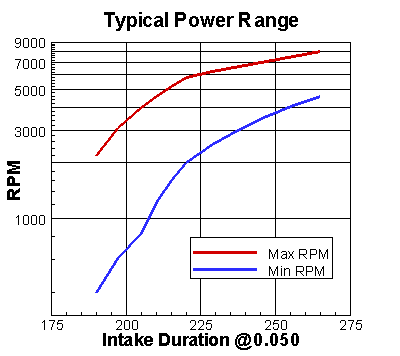
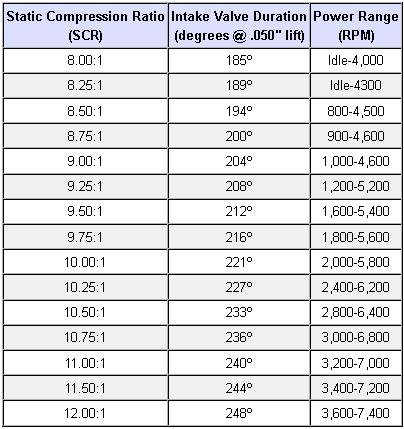
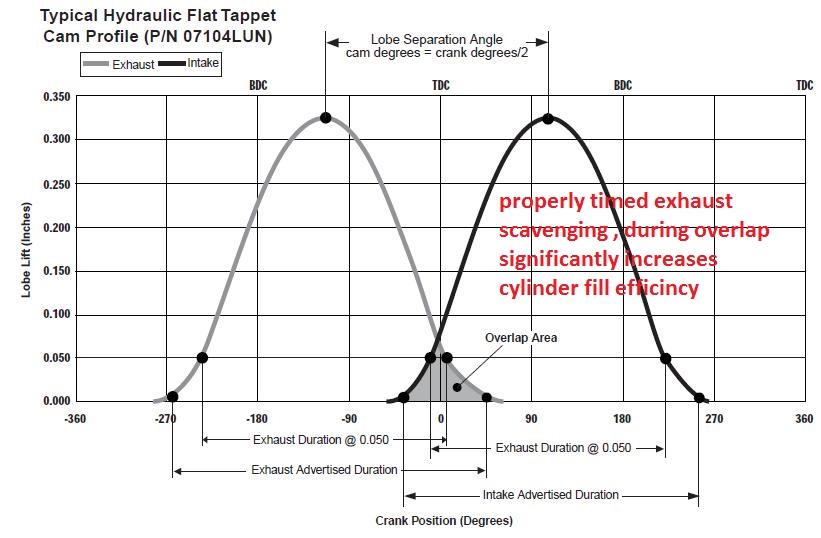

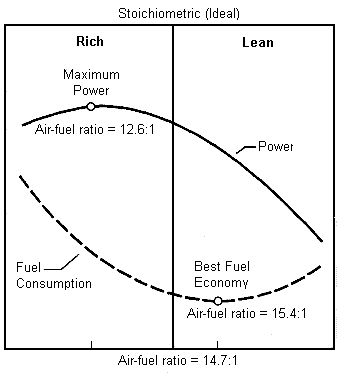
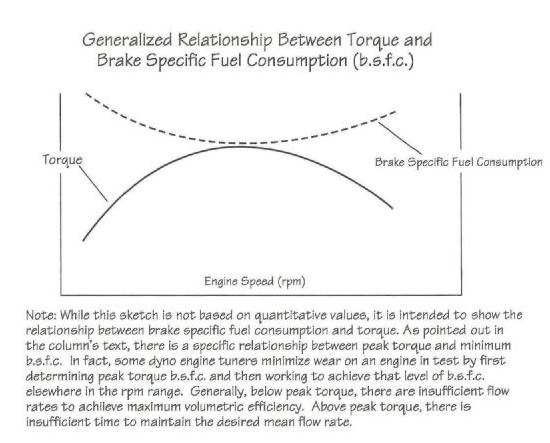
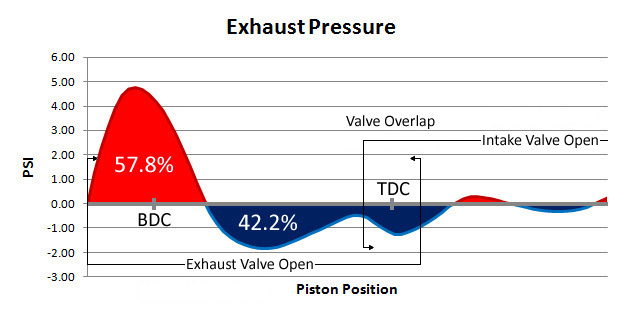

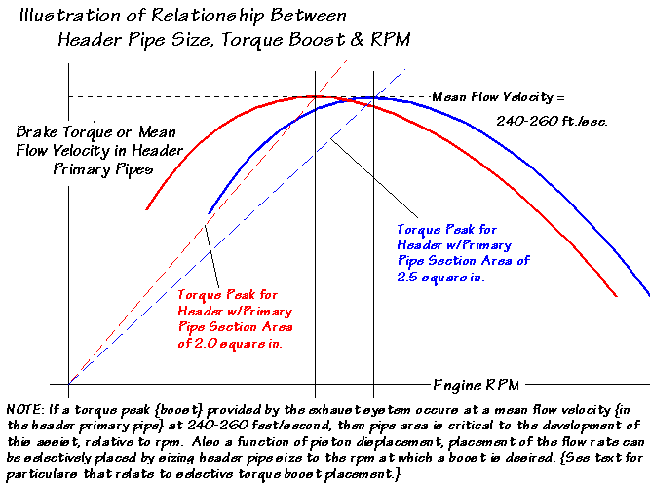
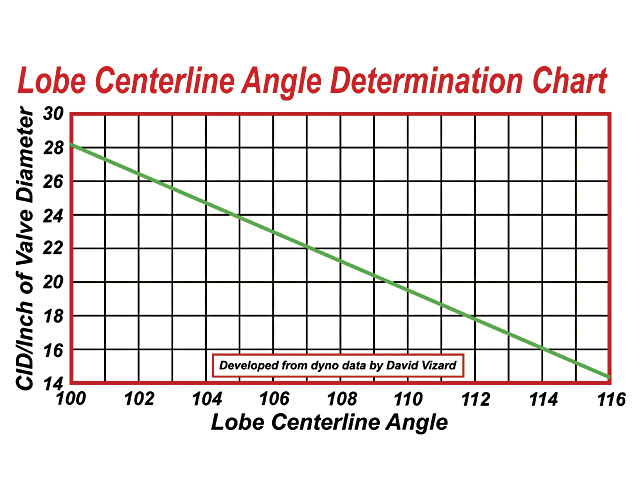
keep in mind the formula for CALCULATING engine displacement
bore x bore x stroke x number of cylinders x .7854= displacement
MARK v-VI blocks
4.31 x 4.31 x 4.25 x 8 x .7854=496 cubic inches
later vortec 8100 version
4.25 x 4.25 x 4.375 x 8 x .7854 =496.5
Last edited:
